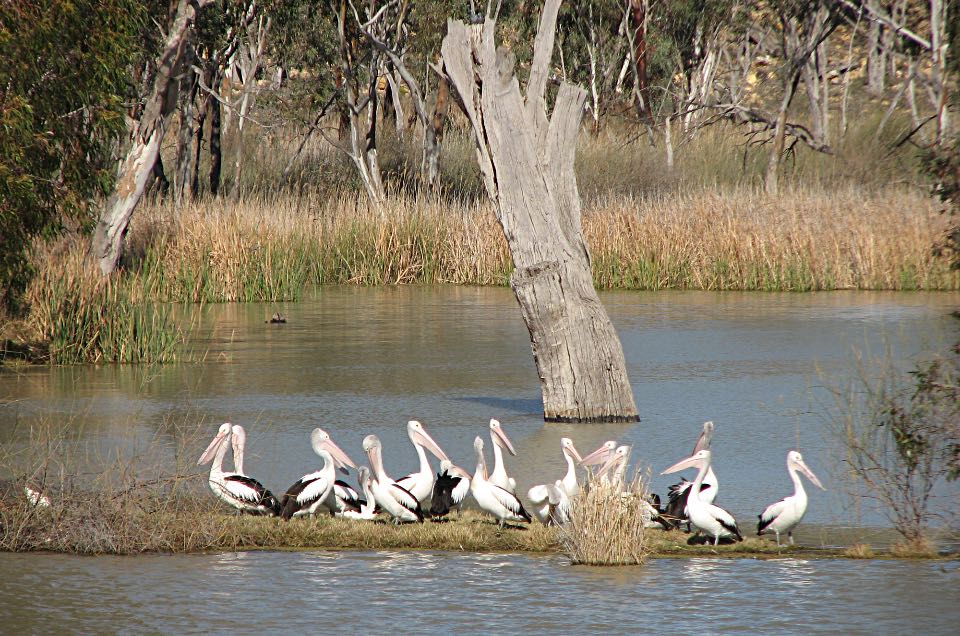
|
|
|
|
Regent parrot surveyI know little about it but I believe the regent parrot is listed as 'vulnerable'. It seems to have a very limited range near the Murray river nesting in hollows in river red gums (Eucalyptus camaldulensis).There were two parts each day to the survey that I was involved in. We started soon after first light, looked for and recorded parrots until about 11am. We then usually went back to the houseboat and had free time until around 3pm and went out looking for parrots until about 5pm. The houseboat acted as our base. It was moved to a new place every day. Usually two of the group would move the houseboat (while also looking for regents) while the other four were out in the field. There were a total of six people in the group all the time I was involved, not the same six people all the time. |

|

|
|
Early one morning near Cadell on the Murray. This is by far the best time of day to see the beauty of the river, but not many people do it because they can't be bothered getting out of bed.
Photo Apple iPhone 7, 2021/09/04 |
I love ground-hugging mists, I've taken advantage of them on other occasions, in Blinman in the Flinders Ranges, at Clare, in the Gleeson Wetlands, and on my own property (Elysium 1 and Elysium 2) also at Clare.
Photo Apple iPhone 7, 2021/09/04
Photo Apple iPhone 7, 2021/09/04
The river bank has been eroded by high flows and the tree's roots exposed.
Photo Apple iPhone 7, 2021/09/04
Photo Apple iPhone 7, 2021/09/04
Birds other than the regent parrotYellow rosella
There is an interesting article on this remarkably variable species in The Conversation. The red rumped parrot (Psephotus haematonotus) was another in the area that looked somewhat similar to the regent.
Black swan
Photo Canon Powershot S3, 2021/09/08
Pelican
Its size also makes it one of the easiest to photograph.
This photo was probably taken from the houseboat, but I don't recall the exact circumstances.
Photo Canon Powershot S3 IS, 2021/09/01
Wood duck ducklings
The wood duck (Chenonetta jubata), also called the maned goose, while looking like a duck has feeding habits closer to those of a goose than a duck, it can as often be seen grazing near water as feeding in the water.
Photo Canon Powershot S3, 2021/09/08
Little eagle
The Whistling kite (Haliastur sphenurus) was much more common along the section of the Murray that we covered. Photo Canon Powershot S3, 2021/09/04
Photo Canon Powershot S3, 2021/09/04
Whistling kite
Their conspicuous nests, which consist of large piles of sticks, are usually in the taller gums along the river. They have varied diets which, significantly in this context, include fish. Wikipedia gives their diet as "small mammals, birds, fish, reptiles, amphibians, crustaceans, insects and carrion".
Photo Canon Powershot S3 IS, 2021/09/08
Tawny frogmouth
Photo Canon Ixus 190, 2021/10/06. This image was captured using the full 10x optical zoom of the Ixus and the full resolution of a very small part of the original.
Regent parrots (Polytelis anthopeplus)
This photo by Margaret Hains. Peter Barnes' regent photos are elsewhere on this page, my photos are immediately below. Margaret was in the same group as was I, she is a keen photographer, and, fortunately for the rest of us, a very good and willing cook - we ate well.
It is difficult to get the right lighting when looking up into a tree from underneath; Margaret did a great job with this shot of an adult male.
Photo Canon Powershot S3,2021/09/03
Photo Canon Powershot S3, 2021/09/04
Photo Canon Powershot S3, 2021/09/04
I have other silo art recorded on another page on Victoria, here and here, and a particularly beautiful piece on the Wirrabara silo. Photo Apple iPhone 7, 2021/09/09
Some interesting plants
The bright circle is a 10¢ coin, for scale.
Photo Canon Ixus 190, 2021/09/03
It was in the same area as the one above, the colours were distinctly different, the above one was much more greenish, this blue-grey. Photo Apple iPhone 7, 2021/09/03
Feral gazanias (Gazania rigens)
Should we shun or ignore plants because they are weeds, even if they are beautiful? I don't think so. We might need to try to remove them from where they shouldn't be, but there is no reason why we shouldn't enjoy their beauty. This, and one other of the moorings that we used, had obviously been looked after by someone with a connection to the area. There was no indication that the general public were not welcome to moor at these places. It was refreshing to see some altruism here rather than the selfishness that can be seen elsewhere on the river.
Photo Apple iPhone 7, 2021/09/08
Photo Apple iPhone 7, 2021/09/08
A foggy morning |

|
|
A thin mist in the air before we set out for the morning's survey.
Photo Apple iPhone 7, 2021/09/08
|
Photo Apple iPhone 7, 2021/09/08
Cobwebs: 'the kingdom of the spiders' |
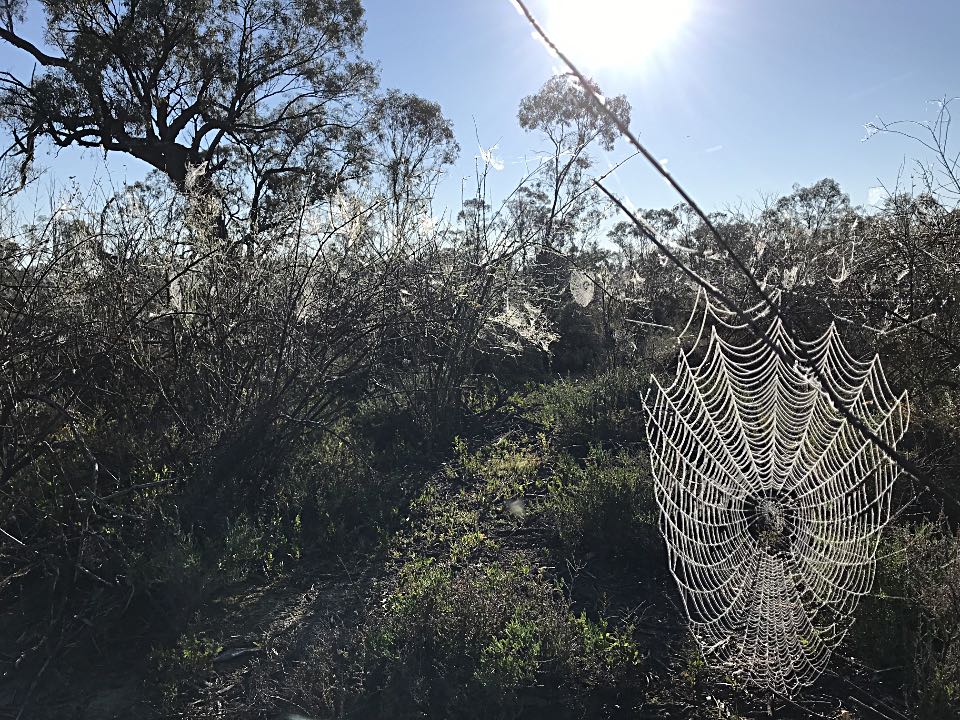
|
Photo Apple iPhone 7, 2021/09/08 |
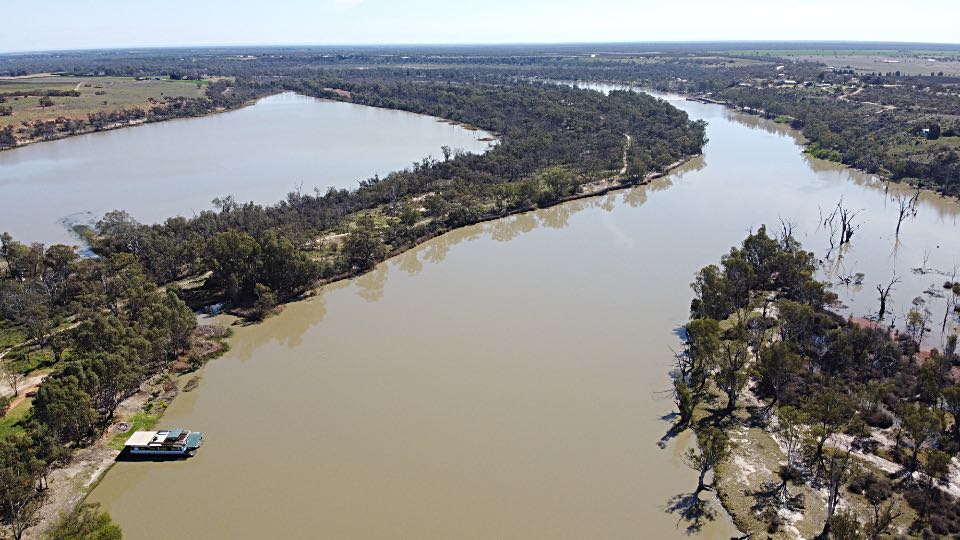
|
|
Our houseboat is in the left foreground in this image and the weir and Lock 2 in the distance on the right (more clearly seen in the high definition image - click on this one).
Photo DJI Mavik Mini Drone, 2021/09/07 |
The expanse of water further on the right is also lagoon, not the main channel of the river.
Photo DJI Mavic Mini drone, 2021/09/05
Photo DJI Mavic Mini drone, 2021/09/05
One of the more picturesque lagoons
Photo Apple iPhone 7, 2021/09/07
|
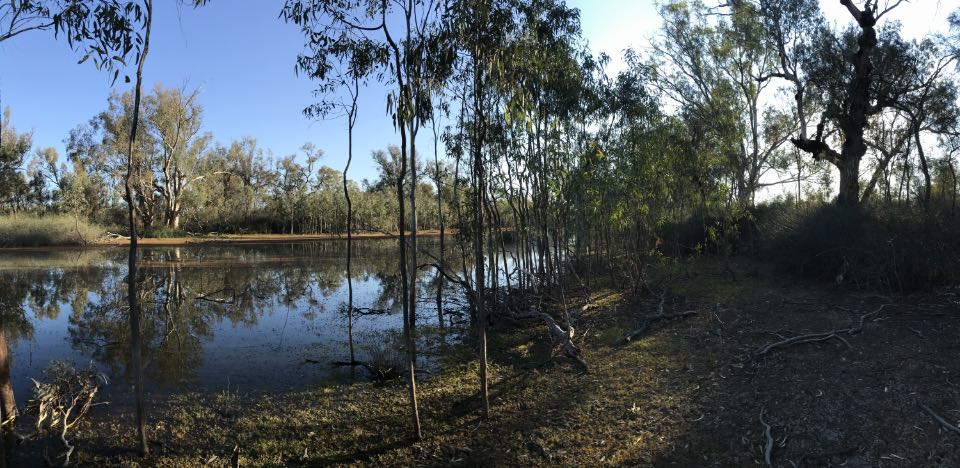
|
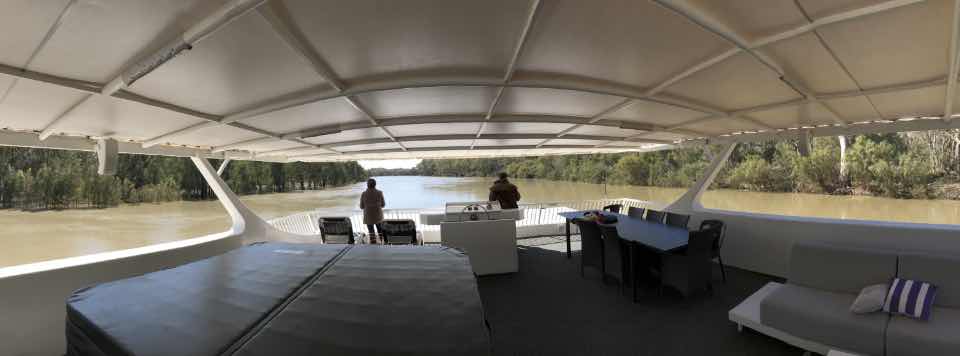
|
|
While moving the houseboat from one overnight mooring site to the next a watch was kept for regent parrots. The procedure consisted of travelling for about 1.5 kilometres and then stopping, listening and watching for about ten minutes.
The houseboat that was used when I did my second stint was much more luxurious than that on my first stint. Note the spar-bath on the left. This boat also had 24 hour 240 volt power and power points in all rooms, the first only had 240 volt power when the noisy generator was running and there were only a very few power points in the lounge, none in the bedrooms. Photo 2021/10/05, iPhone 7 |
On Both stints there were six people present. Peter Barnes, whose bird photos are below, is on the left.
Photo 2021/10/05, iPhone 7
Red gums (Eucalyptus camaldulensis) germinate in huge numbers following flooding, and then there is competition for resources that sees the great majority die off. The sparse foliage on these trees suggests that they are highly stressed. The green shrubby tree on the lower right is a native cherry, Exocarpos curessiformis. This is poor regent parrot habitat because the trees are far too young to have hollows suitable for nesting.
Photo 2021/10/05, iPhone 7
Photo 2021/10/06, iPhone 7
The red object is an insulated bag that had apparently blown away from someone's camp.
I have found creeping boobialla to be a very useful ground-cover at my places, at the Gleeson Wetlands in Clare and Central Park in Crystal Brook.
Photo 2021/10/07, iPhone 7
Red gums are remarkable trees, even for Eucalypts, they can stand having their roots waterlogged for several months without harm.
Photo 2021/10/07, iPhone 7
Regent parrots were active in the early mornings. This made it necessary for us to get out and start looking for them also in the early mornings, we saw the sunrises every morning.
Photo 2021/10/08, iPhone 7 |
Photos by Peter BarnesPeter was rostered on for the same period as my second stint. He is a keen birder and bird photographer. He was good enough to provide some of his photos for me to add to this page. |

|
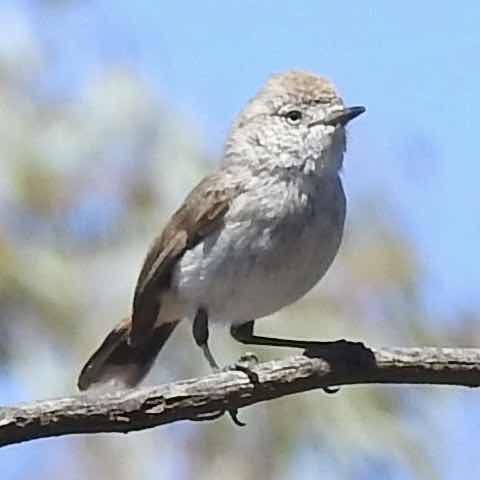
|
Chestnut rumped thornbills | |
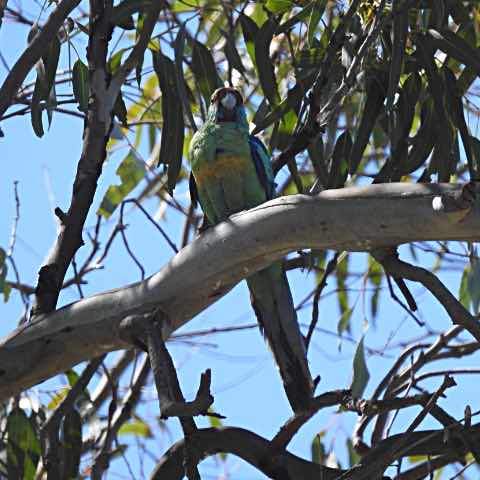
|
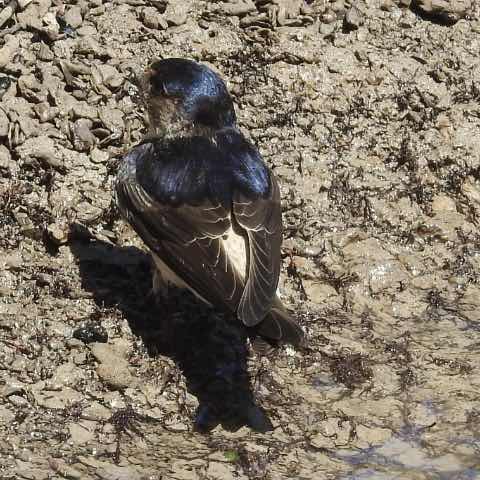
|
Mallee ringnecked parrot | Tree martin |
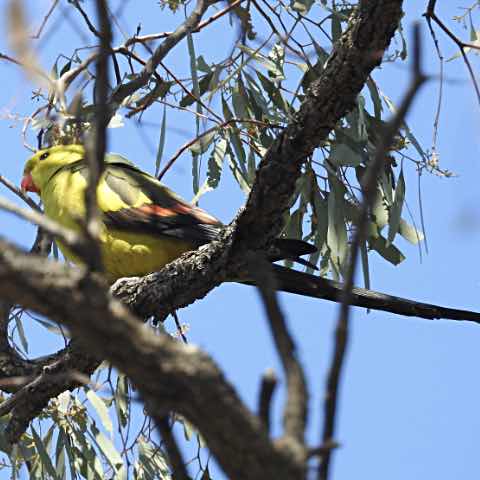
|

|
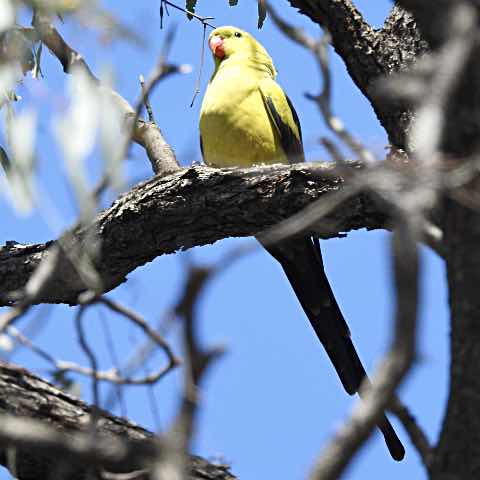
|

|
"First 3 photos adult male Regent parrots. Last photo probably a fledgling. It has a short splayed tail from being in a nest hollow. Relatively green colour. Small."The images all have high definition versions. Click on one of the small images to see the high definition version. Peter Barnes - wood swallows |

|
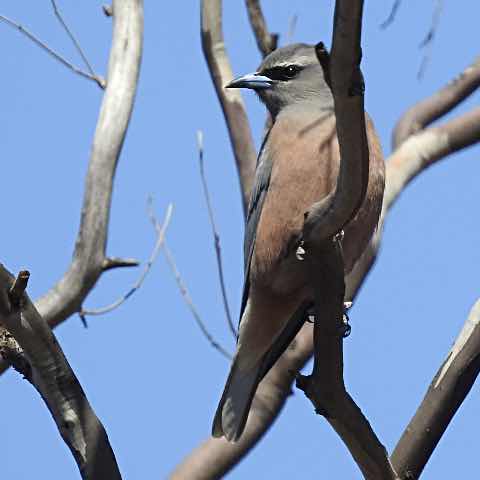
|
Female masked wood swallow | Female white-browed wood swallow |
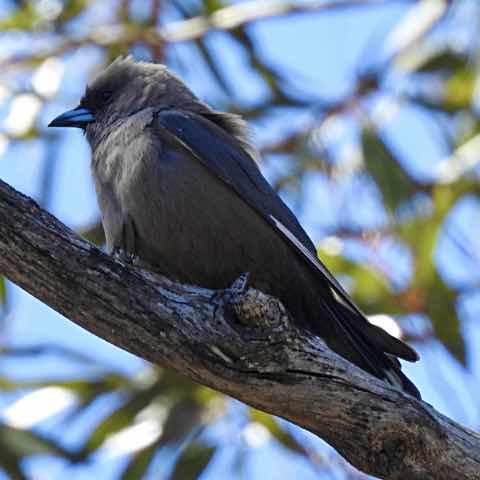
|

|
Dusky wood swallow | Male white-browed wood swallow |
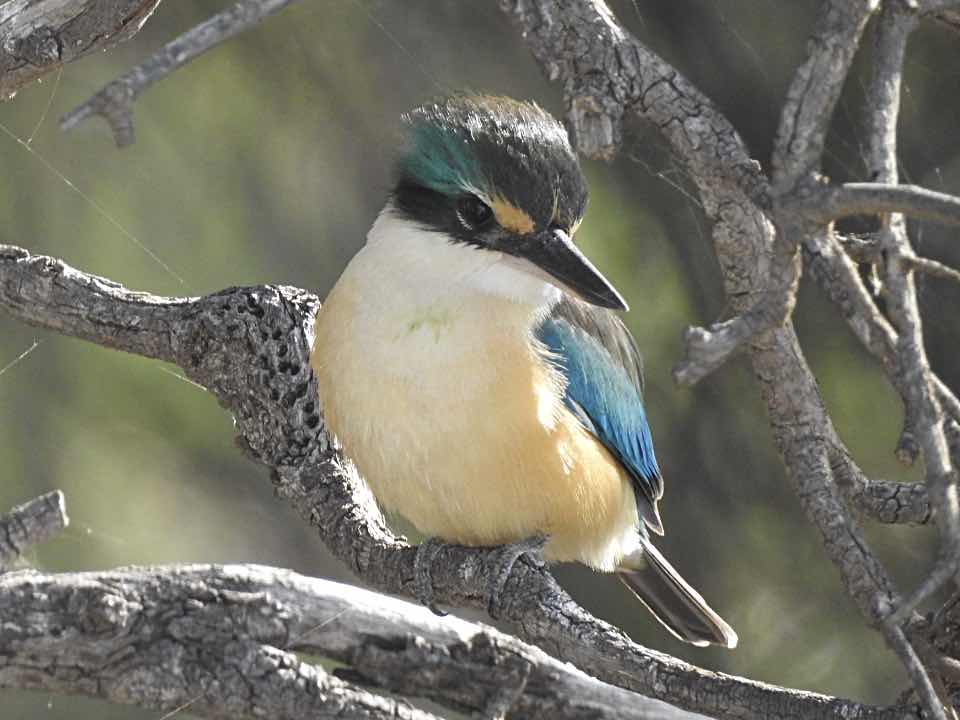
|
|
This is my favourite among those photos of Peter's that I saw.
Photo early October 2021 |
|
|
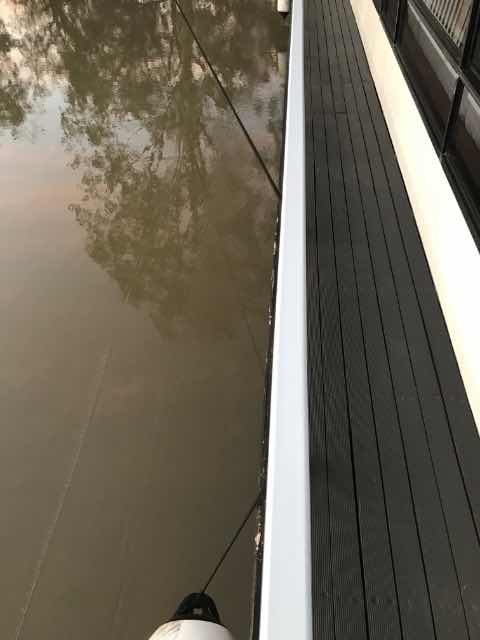
|
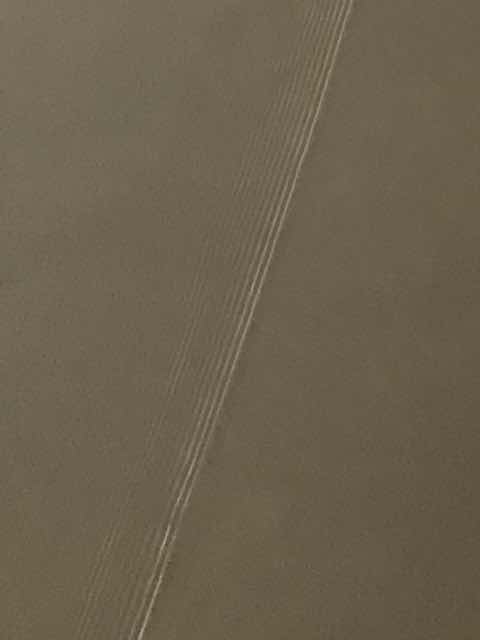
|
|
I noticed this very small and subtle standing wave on a very calm morning (running from the bottom left corner of the left image upward and toward the right and enlarged in the right image). I'm theorising that it formed along the line where the water moving with the quite strong current met the stationary water that had been blocked by the pontoon under the houseboat.
Photo Apple iPhone 7, 2021/10/08 |
Canoe tree
Photo Apple iPhone 7, 2021/09/07
Gum tree burl
Photo Canon Ixus 190, 2021/09/06
Pumps and groundwater
Water has been diverted from the Murray for irrigation at least since the Chaffey Brothers established their first irrigation settlement at Mildura in northern Victoria in 1886, followed by one at Renmark in South Australia. Apart from the impact of climate change most of the problems of the present day Murray-Darling Basin, including the declining numbers of regent parrots, can be traced back to excessive or wasteful water extraction and irrigation practices.
Photo Apple iPhone 7, 2021/09/07
Groundwater seepage
Note the dry reeds on the shelf where the seepage comes out.
Photo Canon Powershot S3 IS, 2021/09/08
Seepage out of the perched aquifers going into the river is always much more saline than the water that was taken from the river for the irrigation - much of the water and none of the salt is lost to evaporation and transpiration. (I was involved in the Woolpunda saline groundwater interception scheme, and the one that followed it, in my work with the hydrogeology section of the SA Department of Mines and Energy.) Both these photos show feral palm trees that have established along this and other sections of Murray cliffs. There were many more in other sections. Photo Canon Powershot S3 IS, 2021/09/08
Me
For the first few days I used my own binoculars, not realising how much better were those that were available from the organisers of the survey. I think I paid about $70 for mine some 40 or so years ago, the quality Leica ones that were in use on the survey were worth about $3,500.
Photo by Margaret Hains taken on our first afternoon in the field, 2021/09/01.
Selfishness
Anyone using this particular launching ramp would have had to cross privately owned land so perhaps the 'owner' had had problems with irresponsible people on his land. The apparent selfishness might be justifiable if all the facts were known. There was another 'private' launching ramp near the mooring we used south of Morgan. Again, it was very difficult to see why the ramp should not be available to all. Compassion to our fellow humans and to the animals and plants with whom we share the planet is one of the most admirable of human characteristics.
This world is desperately in need of shifting from fossil fuels to renewable energy, most of the reasons that we are not doing so have something to do with selfishness, as particularly in the case of those who oppose wind power.
Drone overview
Morgan is at the point where the Murray makes a major turn to flow southward toward its mouth after flowing generally westward for many hundreds of kilometres. It was once the main railhead and port on the South Australian section of the river.
The paddle 'steamer' in the foreground is the PS Canally. The Morgan ferry can be seen crossing the river in the distance.
Salinisation is a huge problem along the South Australian section of the Murray.
Limestone cliffs such as those on the right in this image line much of the South Australian part of the Murray. In some sections they are right on the river, like these, at other places they may be a kilometre or more away.
We were to come back along these sections of the river during the part of the survey in which I took part.
PhilosophyShould I spend my time helping out in environmental work like the Regent Parrot Recovery Survey, or could I spend my time more constructively elsewhere?
If an individual is concerned about the whole environment how much time and resources should he/she put into regent parrots. And then how much use will a survey be toward the survival of the regent parrot? It seems to me that my time will be better spent trying to get action on global problems, particularly climate change and the millions of people who are killed each year by the air pollution from the burning of fossil fuels.
At the time of writing a study of the effects on people's sleep due to wind farms by Flinders University was unfinished. I have written about the study elsewhere on these pages. I will continue to argue in support of wind power because we must replace fossil fuel energy with renewable energy including wind power. |
Related pagesExternal sites...Regent Parrot Nest Survey 2010, Prepared for the S.A. Regent Parrot Recovery Team, March 2011Australian Geographic, "Regent parrots thriving in SA wetland, Banrock Station’s Ramsar site". National Recovery Plan for the Regent Parrot (eastern subspecies) Polytelis anthopeplus monarchoides; Prepared by David Baker-Gabb (Elanus Pty. Ltd.) and Victor G. Hurley (Department of Sustainability and Environment, Mildura), October 2011.
Recovery Plan for the Regent Parrot (eastern subspecies) Polytelis anthopeplus monarchoides in the South Australian Murray Darling Basin; Published by the Department for Environment and Heritage, Berri, South Australia; October 2006
On this site...Lists of my pages mainly concentrating on images: overseas and in AustraliaA list of my pages relating to the Australian environment A 750 kilometre walk for climate action The burning of fossil fuels is widely recognised as the main cause of climate change, ocean acidification, sea level rise and ocean warming. The air pollution from the burning of fossil fuels kills millions of people world-wide each year. Media lies about climate change and the refusal to reduce emissions by those in power should rightly be ranked as the greatest crimes in history due to the enormous harm that they are doing to our precious shared planet. Among the criminals would have to be listed Australia's Prime Ministers Tony Abbott and Scot Morrison and Energy Minister Angus Taylor. |